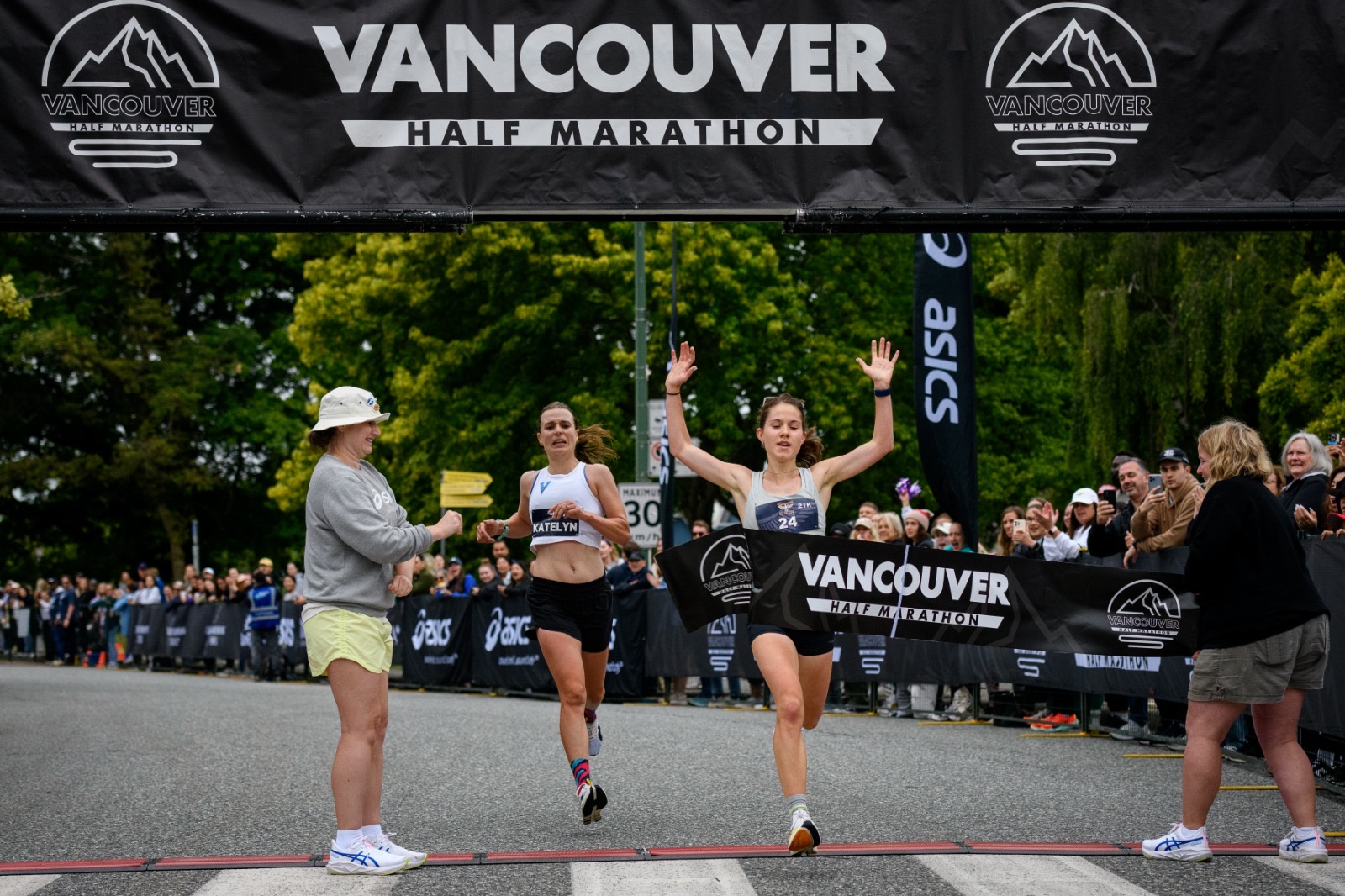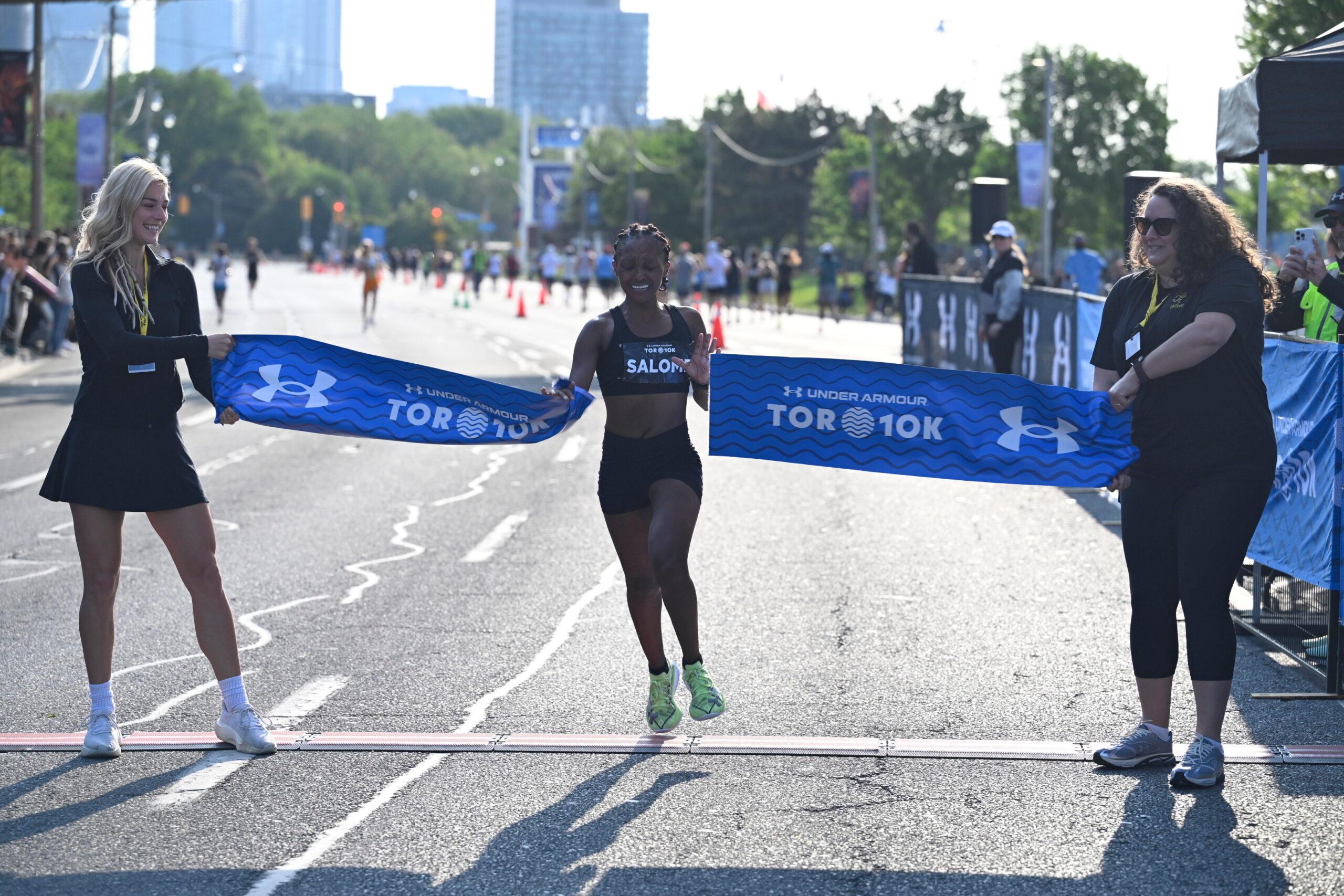
By John Stanton, Founder of Running Room.
As race day approaches, you may have a few questions on final training and race strategy. Here are some thoughts from founder of Running Room, John Stanton.
At running events and expos, I am frequently asked: “What is the bare minimum I need to run to prepare for a big race?”
The answer is: you need to run four times a week. Two of these runs are simply for base training, while the other two should be high-quality runs with a focus on speed and stamina. The quality runs should consist of a tempo speed run and a weekend long slow endurance run.
For a tempo workout, begin and end with a 1K warm-up and 1K cool-down. The kilometres in between (ranging from 5 to 10K) should be run at a pace about 15 to 30 seconds slower than your current 5K race pace. Tempo runs help your body and mind adapt to running at an uncomfortable pace. They help increase your VO2 Max (your body’s ability to take in and utilize oxygen at the muscle layer to make energy), as well as push out your lactate threshold (the point at which you feel that burning sensation in your legs from the lactic acid). These workouts will make you a more efficient runner and improve your ability to fight off fatigue.
To teach your body that you can pull out some speed when needed, add a short burst to your tempo runs. During your weekly tempo session, include a repeat that is 60 to 90 seconds faster than your projected race day pace. The faster running over a shorter period of time will build your confidence and add some snap to your leg turnover rate, while minimizing your injury risk.
Your long slow run is just that: long, slow distance. Your pace should be about 60 to 90 seconds slower than your projected race pace. Doing your long runs at a slower pace helps your body build endurance without wearing it down. Most running injuries come from running too fast—I have yet to hear of a runner becoming injured from running too slow. The purpose of the long run is to introduce your body to the rigours of running for an extended period of time, so be disciplined about the slower pace required for these workouts.
The two weekly base training or “maintenance” runs are short runs of 3 to 5K. These are as much for your head as they are for your body, and they should be run at a comfortable pace.
They are designed to keep your total weekly base miles up and act as recovery runs to keep your legs loose and limber.
Following this four-runs-per-week program is useful, especially when you’re trying to balance your personal, professional and community activities and still find time to run.
Race Strategy
There are three strategies for race day:
- Start hard and fast and fade in the later stages of the race.
- Start slow and run a faster second half of the race.
- Run the whole race at a steady consistent pace.
My recommendation is to run the whole race at an even pace. This approach will, in theory, produce the best times for the runner. Start too fast, and you will discover an early and deep fatigue created from early oxygen debt. Running the final stages of the race is a challenge because of the deep fatigue. For the best recovery, start slow and build into the race. Your optimum time may not be achieved, but your post-race recovery will be improved. It makes for the most comfortable race. Even pacing will give you the best race results.








